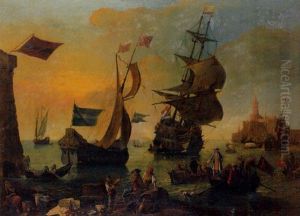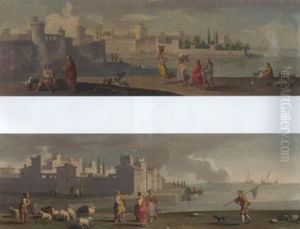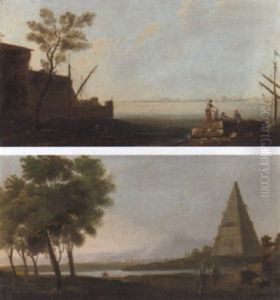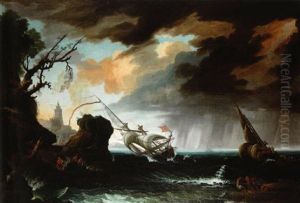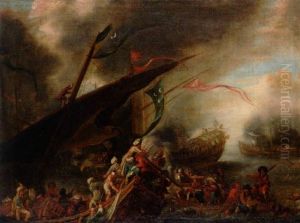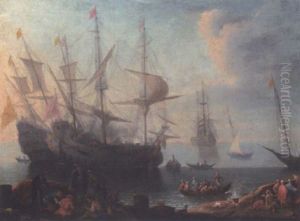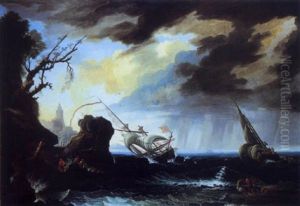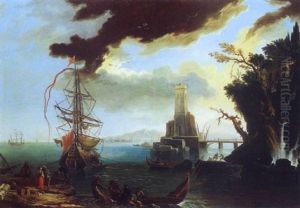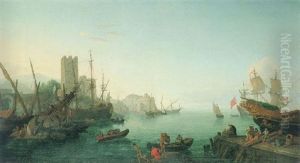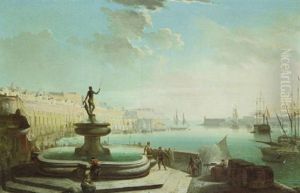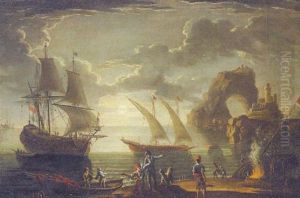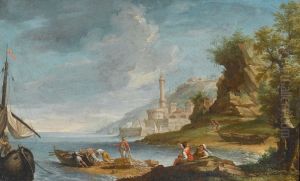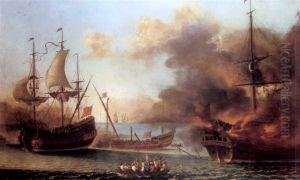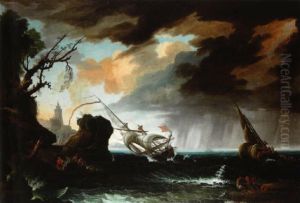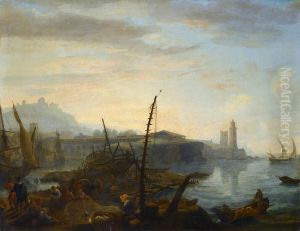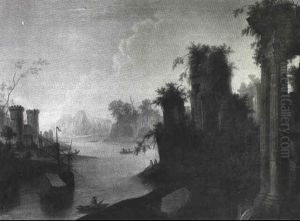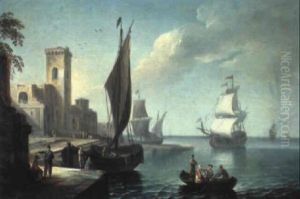Adrien Manglard Paintings
Adrien Manglard was a French painter and engraver born on March 10, 1695, in Lyon, France. He is recognized for his marine paintings and was considered one of the leading marine artists of the 18th century. Manglard's talent for depicting the sea in its various states, from calm to tempestuous, made his work highly sought after by collectors and patrons, including members of European royalty.
Manglard began his artistic training in Lyon but moved to Paris to further his studies. His early career is not well-documented, but it is known that by the early 1720s, he had established himself in Rome, Italy. There, he became a part of the French artistic community and was influenced by the Roman seascapes. His work began to gain recognition, and he was admitted to the prestigious Académie de France in Rome in 1725.
In Rome, Manglard received commissions from notable patrons, including the Pope's nephew, Cardinal Alessandro Albani. His paintings often featured Mediterranean ports, naval battles, and seascapes with classical ruins, reflecting the taste of his clientele for grand, historical, and mythological subjects. Despite his French origins, Manglard's career flourished in Italy, and he became a link between the French and Italian artistic worlds.
Manglard's style was marked by a dramatic use of light and shadow, with a particular attention to the naturalistic representation of water and sky. He was adept at capturing the movement of the waves and the atmosphere of the sea. His influence extended to other marine artists of the time, and his works were engraved and circulated widely, contributing to his international reputation.
The artist spent his later years in Italy, where he died on August 1, 1760, in Rome. Today, Manglard's paintings can be found in numerous art collections across Europe, including the Louvre in Paris and the Museo di Capodimonte in Naples. His legacy is that of a master of marine painting, whose works continue to be appreciated for their dynamic representation of the sea and its moods.



